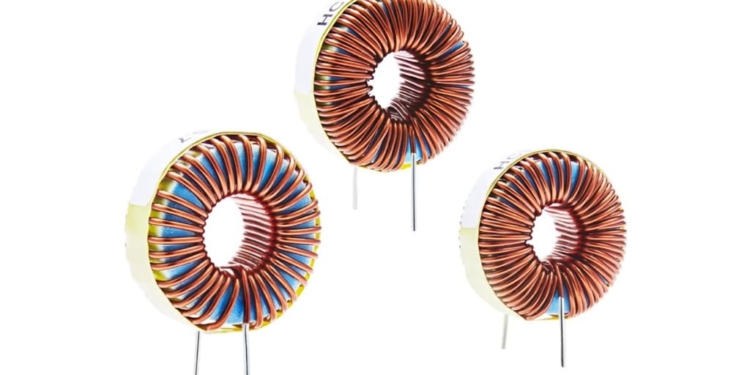source: Signal Transformer news
High Current Toroidal Inductors (HCTI) are vertical PCB mounted, high-frequency magnetics with a broad inductance and current range. Although offered as standard catalog items within this range, versions can be designed for custom inductances, with 2 or 4 pin headers, or horizontal mount.
The vertical-mount inductors are available in a wide range of standard inductances from 10 µH to 1,000 µH and rated currents ranging from 2.4 A to 20 A. Custom versions of the HCTI inductors can be designed for horizontal PCB mounting, with two- or four-pin headers or non-standard inductances.
The toroidal inductors offer higher current to enhance frequency magnetics. By increasing frequencies, these inductors create design flexibility in applications such as smart lighting, switch-mode power supply (SMPS), and DC/DC converters.
Specifications
- Operating Temperature: -55°C to 105°C
- Inductance: 10 μH – 1000 μH @ 0 ADC
- Rated Current: 2.4 A to 20.0 A
- Class B Insulation
- RoHS and REACH Compliant
- 1.28” Max Height, 0.65” Max Width
Features
- Higher Efficiency through reduced core loss
- Low Magnetic Radiation from self-shielding
- High Energy Storage with distributed air gaps
- Lower Temperature Rise with high current density
- Vertical PC mounting for optimal PC layout
Signal Transformer, a Bel group company, manufactures custom and standard transformers, chokes, and inductors.































